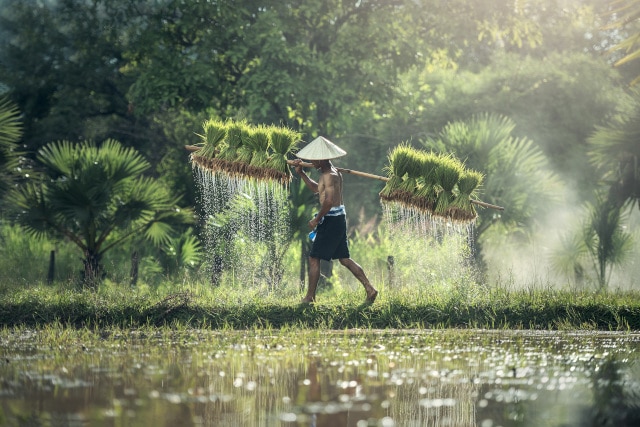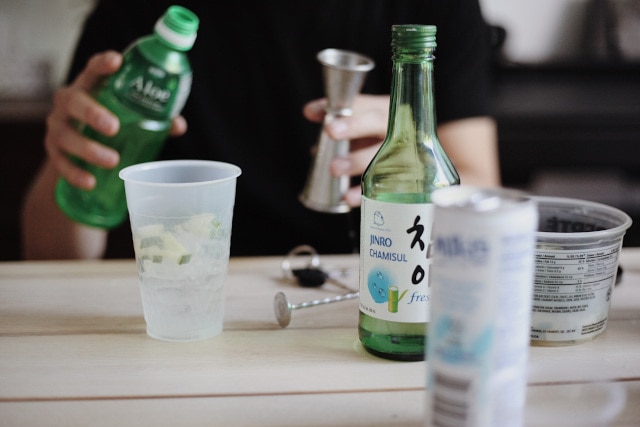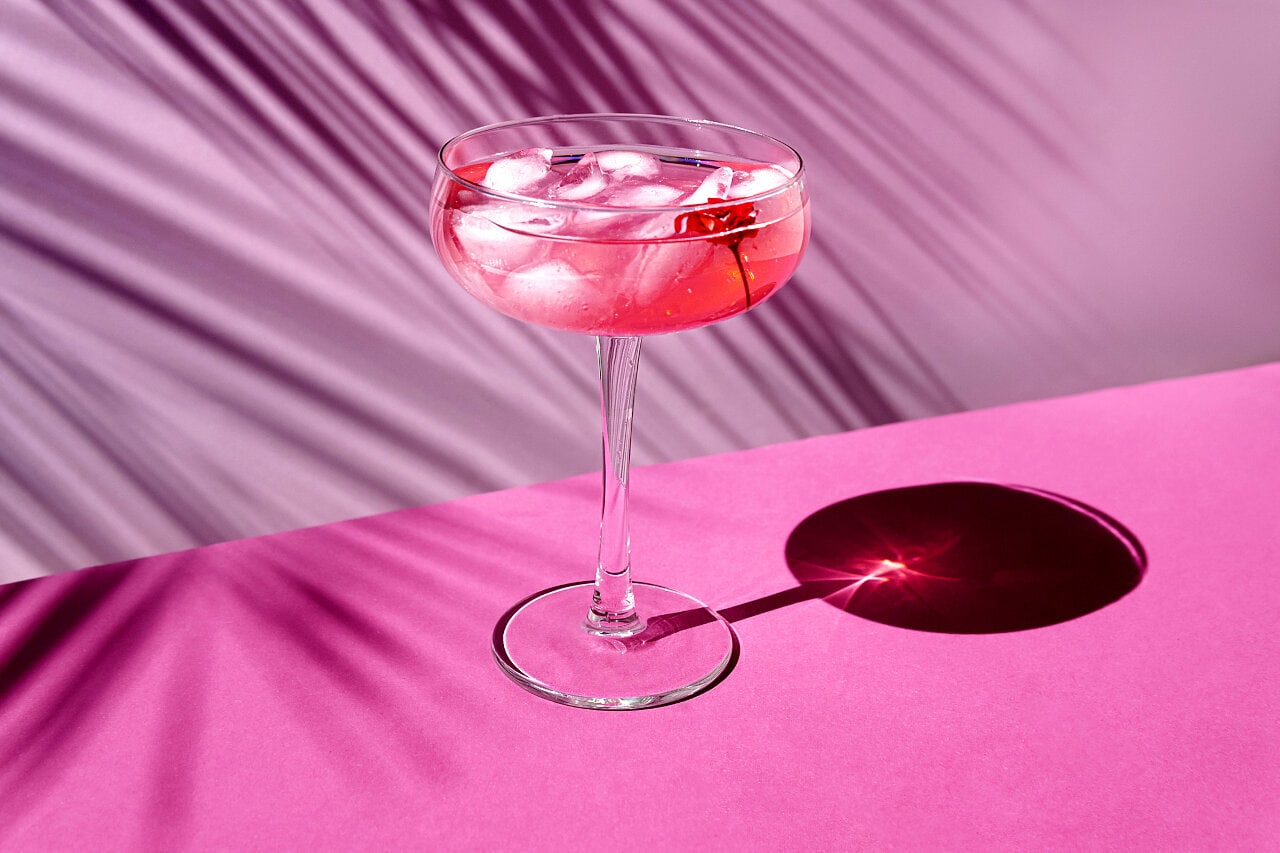Soju has taken the world by storm, outselling both vodka and gin (source: Statista). But how did this sweet and trendy Korean alcoholic beverage rise to the occasion?
It may surprise you to discover the history of soju and how this popular spirit came from humble beginnings, and an even more unlikely story of how it developed into an overnight sensation.

History Of Soju
Let’s examine the history of soju, beginning with what it is and how it is made.
What Is Soju?

Soju is the national drink of Korea; it’s also the best-selling alcoholic spirit in the world. The best Soju brands, such as Jinro and Lotte, are now known and enjoyed worldwide.
If you find yourself drinking in Korea, you’re almost certainly drinking this sweet, mild, vodka-style drink.
While soju is available in hundreds of flavours and styles, basic soju is a neutral, colourless alcohol. It typically has an ABV of about 20%; distillers produce it from fermented grains and other starch.
There are almost as many ways to enjoy soju as there are variations and additions to its straightforward formula. I prefer to drink it neat as a shot, although it’s also an excellent addition to cocktails such as the Sesame Soju Mojito.
How Is Soju Made?

Distillers traditionally make soju from rice, water, and nuruk, a wheat-based fermentation starter. First, the nuruk ferments, attracting natural yeast from the air. Then, after it has fermented, distillers add it to a rice mash along with water.
This funck mixture then ferments for about two weeks and is then strained to let the solids separate out. It’s the clear liquid that floats to the top that is distilled, and like whiskey, it can be aged for additional flavour.
Finally, I discovered that most distillers add additional sugar, flavouring, or more water to reach the right taste notes and flavour for their specific take on soju.
The Origin Of Soju

Let me take you back to the start of soju, a time when the Mongol Empire introduced spirits (such as Arak) and distillation to the Korean people.
Arak was an instant hit in Korea, and distilleries sprang up around the then-capital Kaesong. Over time, this cultural exchange led to Koreans developing a unique brewing style using indigenous rice varieties. The result was soju.
Like its Arak predecessor, it seems that soju was beloved in Mongol-occupied Korea. People of the Yuan Dynasty, especially soldiers, loved it. People considered soju from the logistics hub of Andong to be the highest quality.
Soju Spreads Across Korea
Soju quickly became a beloved cultural icon across all of Korea and would remain that way for centuries. Even after the Yuan Dynasty collapsed, their brewing and distillation techniques continued.
Soju And Culture Classes

However, only the rich could afford high-quality soju and the expensive machines required. They enjoyed cheongu, the clear liquid that floats to the top of a vessel during the separation process.
These aristocrats had the cheongu distilled in two-story copper pots called sojugori. Either that, or they bought the famous Andong Soju.
Meanwhile, commoners brewed their soju at home. They used the lower half of the liquid from the separation process, called takju. This milky substance got its colour and rough texture from all the leftover rice sediments. Nevertheless, you could make drinkable alcohol from it.
Often, the lower-class people wouldn’t be able to make proper soju since they didn’t have the equipment. Instead, they stuck to a drink called makgeolli, made from diluted rice sediment with water.
Rice Shortages

However, rice shortages led to a ban on soju production to mitigate the impact of famine. After all, there would be more rice to eat if fewer people fermented it to drink. This law, while saving lives, nearly collapsed the soju industry.
It was only thanks to brave homebrewers that we have soju today. In their homes, and often undercover, people continue to brew soju.
Because of that, Korea doesn’t have a universal, strict standard for soju, like Japan has for their sake or China has for baijiu. Instead, soju can refer to many neutral spirits in countries today.
A Ban On Hombrewed Soju

It’s interesting to know that even though the ban on soju production wasn’t permanent, neither was Korea’s freedom. In 1907, the Japanese government attempted to stamp out any homebrewing.
While they were unsuccessful in the long run, their brutal efforts were responsible for destroying many styles and techniques. This prohibition was another blow to any attempts to strictly regulate or formalise the soju industry.
The Japanese government heavily taxed all Korean alcohol, causing an influx of foreign products. Soon, Koreans chose beer, whisky, and Japanese sake over their native beverage.
Nevertheless, this period saw the beginning of Jinro, the world’s largest soju producer. From humble beginnings in 1924, they’ve grown to control over half the soju market.
How War Affected Soju Production

Although Japan’s defeat in WW2 freed Korea from its grasp, the soju industry was still highly fragile, Jinro included. It barely had any time to recover before the nation was torn apart in the Korean War, which caused a new wave of cheap alcohol to dominate the market.
In 1965, another poor rice harvest led the government to ban distillers from using the crop to make soju. However, this time, this law didn’t damage the industry in the same way as before.
Instead, brewers turned to sweet potatoes and grains like tapioca for their soju. Because there was no law stating that you had to make soju from rice, this practice was entirely legal. Likewise, it led to the trend of additives in soju today.
Distillers added extra water and sugar to their new soju to mimic previous tastes and experiment with new ones. This practice also led to abundant low-ABV soju, which made for easy drinking.
The Soju Monopoly
During the 1970s, brewers also saw consolidation into ten main distilleries, one per province in South Korea. While this technically created a soju monopoly, it also revitalised the struggling industry.
We also saw a brief influx of high-quality soju in this era, targeting wealthier customers. However, these drinks failed to secure a market and largely ceased production when South Korea had a financial crisis in 1998.
Soju’s Boom In Popularity

In 1999, the South Korean government lifted the ban on using rice for soju production. Immediately, the industry boomed, and diverse, affordable styles of soju flooded restaurants, bars, and bottle stores.
Soju has now reclaimed its status as Korea’s national drink, thanks in no small part to how successfully distillers have marketed it to younger generations.
Low-ABV soju with fruit flavours and attractive branding appealed to young adults. This trend is still strong, with ABV percentage dropping yearly and soju growing softer and sweeter.
It seems that everyone in Korea who drinks basically drinks soju. Thanks to the worldwide love of Korean culture, everyone else drinks soju, too.
This ubiquitous drink is inseparable from K-pop and K-dramas. Once you notice how many Korean celebrities drink soju, you’ll realise how common this drink has become.
Now, you can find soju in many bottle stores or Asian groceries across the planet. It’s trendy in the United States, the Philippines, or anywhere we see a Korean diaspora.

Conclusion

Considering the history of soju, it isn’t hard to say that soju has earned its phenomenal success after such a complicated past.
From its beginnings in Mongol Korea to going underground after famine and oppressive governments interfered, we’ve seen this alcohol rise and fall.
Currently, thanks to the Korean Wave, soju is on the rise again. Why not try a bottle of this sweet, easy-to-drink spirit the next time you see it in stores?
Read Also: 7 Soju Brands To Get Excited About
References
Here are some of the helpful reference books and websites that I came across during my research.

Further Reading
Below are some additional articles from The Drinks Geek blog. We write articles on several fascinating areas of drinks, including different brands, drink types, cocktail recipes and more.







